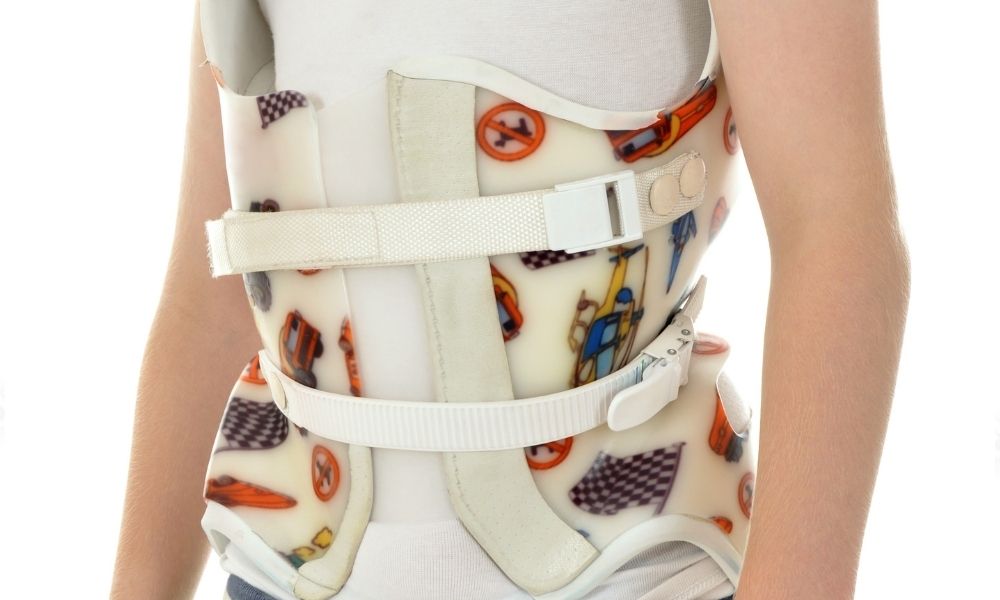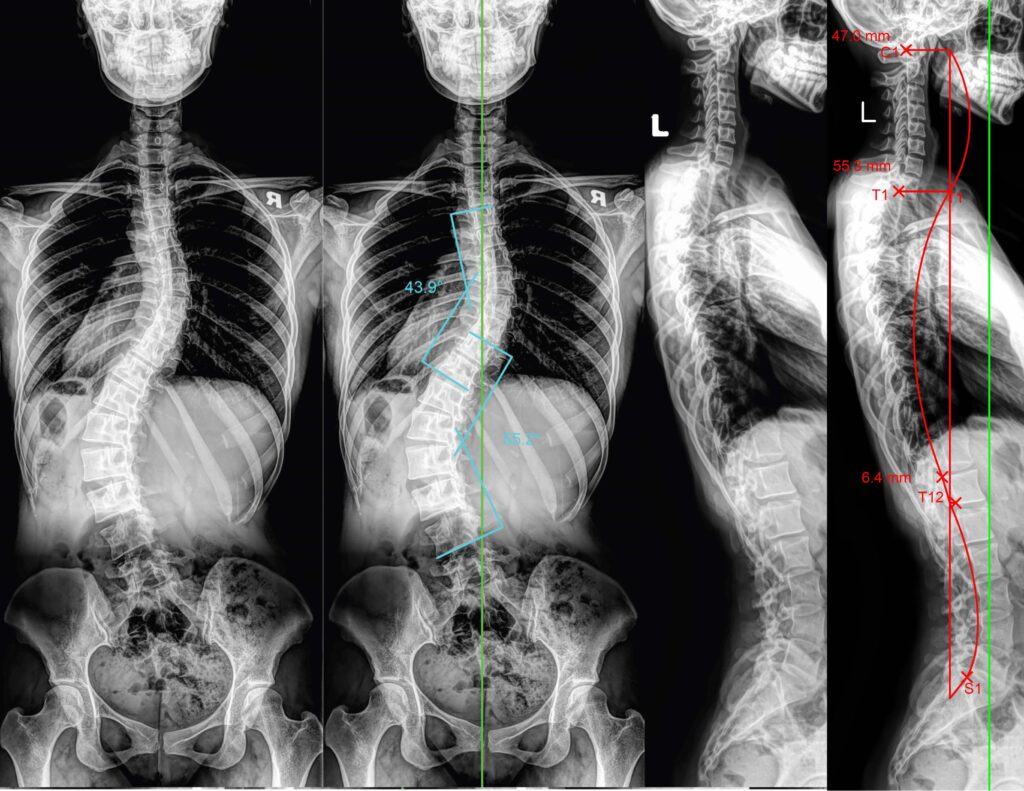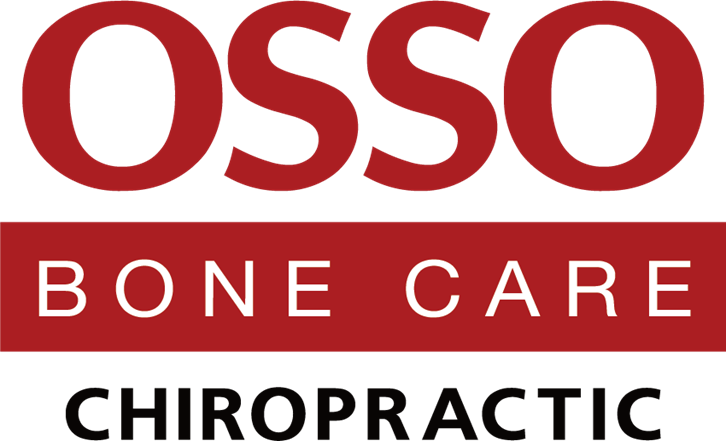Can Chiropractic Care Correct Scoliosis in Teens?

Scoliosis is a medical condition characterised by an abnormal lateral curvature of the spine, often resembling a “C” or “S” shape. This condition can affect individuals of all ages, leading to potential complications if not addressed promptly. Adolescents which make up to 80% of all pediatric cases can show signs from as young as 8 years old.
In Malaysia, scoliosis is a notable health concern. A study published in the Malaysian Orthopaedic Journal reported a prevalence rate of 2.55% among school-aged children, which makes it important for parents to catch it early so intervention can minimise the effects as the child gets older.
What Is Scoliosis?
Scoliosis is a spinal disorder that results in an abnormal sideways curve of the spine. While some cases are caused by underlying conditions like muscular dystrophy or birth defects, the most common form, idiopathic scoliosis, has no known cause. It typically begins in children aged 10-15 and affects about 3% of adolescents worldwide.
The signs of scoliosis include uneven shoulders, a visible rib hump, or one hip appearing higher than the other. While mild scoliosis may cause little discomfort, more pronounced curvatures can lead to chronic pain and mobility issues if untreated.
Degrees of Severity
Doctors measure scoliosis in degrees:
Mild (10-20°): Often requires monitoring and light intervention.
Moderate (21-40°): May need bracing or therapeutic treatment.
Severe (41°+): Can lead to significant discomfort and may require surgery.
Understanding the degree of scoliosis is key to determining the best course of action for treatment.
Types of Scoliosis
Idiopathic Scoliosis
Idiopathic scoliosis is the most common type, accounting for 80% of cases. The term “idiopathic” means the cause is unknown. It typically develops during adolescence and is further classified by age. Signs include uneven shoulders, a tilted waist, or a noticeable curve when bending forward. While the exact cause is unknown, genetics and growth spurts are thought to play a role.
Congenital Scoliosis
Congenital scoliosis results from spinal abnormalities present at birth due to improper vertebral formation. It is rare, affecting 1 in 10,000 newborns, and can be associated with other health issues like heart or kidney defects. The curvature often worsens as the child grows, and early intervention, such as bracing or surgery, is typically required.
Neuromuscular Scoliosis
Neuromuscular scoliosis develops when weak or imbalanced muscles fail to support the spine, leading to a curvature. It often progresses rapidly and may require surgical correction.
Degenerative Scoliosis
Occurs in adults due to the degeneration of spinal discs and joints. Unlike other forms, it is caused by wear and tear on the spine rather than a developmental issue. Symptoms include lower back pain, stiffness, and sometimes nerve-related issues like numbness or sciatica.
The severity of scoliosis varies, with some individuals experiencing mild curves that require minimal intervention, while others may develop more pronounced curvatures necessitating comprehensive treatment.
Early diagnosis is crucial for effective management. Healthcare professionals employ physical examinations and imaging techniques, such as X-rays, to assess the degree of spinal curvature and determine appropriate treatment plans.
Treatment Options for Scoliosis
Treatment strategies depend on the severity of the curve, the patient’s age, and the progression of scoliosis. Apart from simple observation, regularly monitoring for mild curves, especially in children and adolescents during growth spurts, the treatment options for scoliosis may vary.

Bracing
Recommended for growing children to prevent further progression of the curve. Modern braces are designed to be more comfortable and effective.
Chiropractic Care
Chiropractic treatment can help manage scoliosis by improving spinal alignment, reducing discomfort, and enhancing overall mobility. Through non-invasive techniques such as spinal adjustments and specific therapeutic exercises, chiropractors work to relieve pressure on the spine and surrounding muscles, promoting better posture and balance. It can correct scoliosis up to a certain degree, significantly reducing symptoms, preventing progression, and improving quality of life for teens living with the condition.
Physiotherapy
Physiotherapists develop customised exercise programs to strengthen muscles, improve flexibility, and support spinal alignment. Techniques like core strengthening and posture correction are particularly beneficial for managing scoliosis.
Physical Therapy-Based Rehabilitation
Combining chiropractic adjustments with physiotherapy can optimise spinal health by addressing both alignment and muscle function.
Spinal Surgery
Reserved for severe cases, surgical interventions such as spinal fusion are performed to correct the curvature and stabilise the spine. This option is generally considered when the curve exceeds 40–50 degrees or causes significant pain and functional limitations.
Can Chiropractic Care Correct Scoliosis?
Chiropractic care can reduce the severity of scoliosis curves, up to a certain degree. For mild to moderate scoliosis, chiropractic adjustments combined with targeted exercises can help improve alignment and reduce the curvature.
Research on chiropractic care for scoliosis shows promise. In some cases, teens experience reduced discomfort and improved spinal flexibility. For example, a 2018 case study highlighted a 15-year-old patient with moderate scoliosis who saw a 20% improvement in spinal curvature after regular chiropractic sessions. However, outcomes can vary, and more research is needed to confirm long-term benefits.
The degree of correction depends on factors such as the patient’s age, the severity of the curve, and the flexibility of the spine.
Non-Invasive and Tailored Care
Unlike surgery or rigid bracing, chiropractic care offers a non-invasive approach. A chiropractor will create a personalised treatment plan that may include spinal adjustments, stretches, and strengthening exercises. The goal? To reduce pain, improve posture, and help teens move more freely.
Addressing Alignment
One of the cornerstones of chiropractic care is restoring alignment. By reducing imbalances in the spine, chiropractors aim to relieve tension on muscles and nerves, which can help with symptoms. However, this is not a cure for scoliosis—it’s more about improving function and comfort.
Chiropractic care can correct scoliosis up to a certain degree, significantly reducing symptoms, preventing progression, and improving overall quality of life. Chiropractic care is often part of a comprehensive treatment plan, complementing other methods such as bracing or physical therapy.
The Golden Time to Treat Scoliosis – Before 18 Years Old
The ideal time to treat scoliosis is during childhood and adolescence, particularly before the age of 18, this is a golden time receiving the treatment and golden time to correct the curvature. This is because the spine is still growing and more flexible, making it easier to influence its alignment and prevent curve progression.
Early intervention is critical to achieving the best outcomes, as untreated scoliosis can worsen over time and lead to more pronounced curvatures in adulthood. For adolescents, regular screening and monitoring are essential, especially during growth spurts. If scoliosis is detected early, treatments such as bracing, chiropractic care, and specific exercises can be highly effective in managing and minimising the condition.
Why Full Spine + Pelvic X-Ray is Crucial in Scoliosis Assessment

A full spine and pelvic X-ray is a vital diagnostic tool in evaluating scoliosis as it provides a comprehensive view of the entire full spine structure and its alignment with the pelvis. This imaging allows chiropractors and healthcare professionals to accurately measure the degree of spinal curvature, assess any rotation in the vertebrae, and identify potential imbalances in the pelvic region that may contribute to the condition.
By understanding the precise anatomy of the spine, practitioners can develop tailored treatment plans to address the unique needs of each patient. Additionally, full spine and pelvic X-rays help monitor progress over time, ensuring that the chosen interventions are effective in managing or improving scoliosis.
Moreover, pelvic X-rays provide insights into leg length discrepancies or sacroiliac joint dysfunctions that may be contributing to the spinal deformity. This comprehensive understanding allows for a more precise treatment approach, addressing not just the curvature but also its underlying causes. Without including pelvic X-rays, important contributing factors could be overlooked, potentially limiting the effectiveness of scoliosis treatment and management.
One of The Best Chiropractic Centers in Malaysia
With appropriate management, individuals with scoliosis can lead active, fulfilling lives. Regular follow-ups, adherence to treatment plans, and a supportive environment are essential components of effective scoliosis care. Chiropractic care, in particular, offers a holistic approach to managing scoliosis symptoms while promoting overall spinal health. Early intervention, especially before the age of 18, can significantly improve outcomes and prevent further complications.
Wondering if chiropractic care could help your teen? Schedule a consultation with one of our trusted chiropractors to learn more about how personalised care can make a difference.
